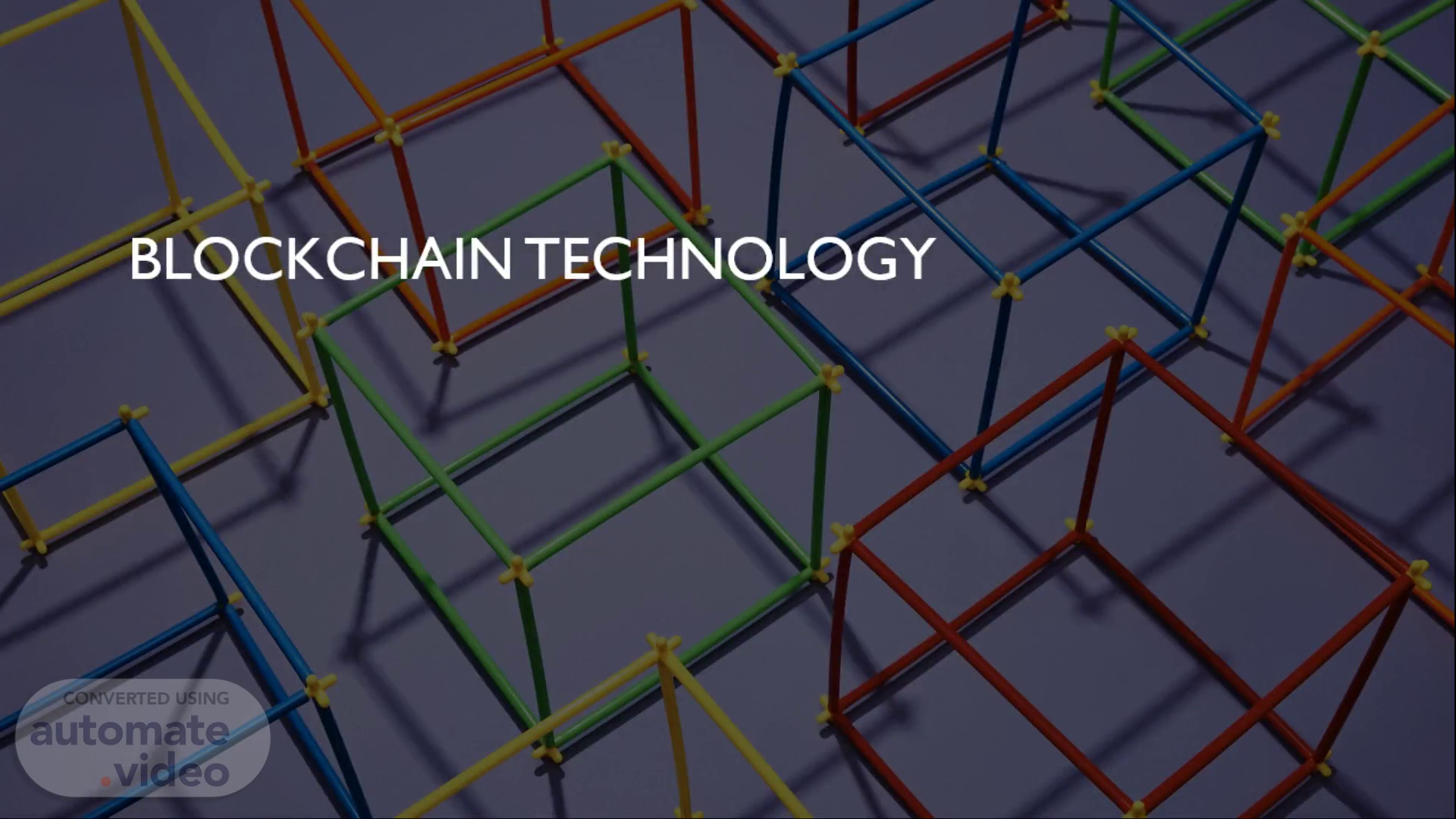
Blockchain Technology
Scene 1 (0s)
Blockchain Technology.
Scene 2 (6s)
too•. What is BlockChain ?. A blockchain is a decentralized peer-to-peer system of transfer. Blockchain works on a single concept, set of blocks connected through chains, hence blockchain. Block + Chain: A block is used to store information or data. These could be transactions, information, or anything else. Each block is encrypted with a hash, which is a unique string of characters generated by a special cryptographic function. Hash is unique and is a kind of Id. How Blocks are Created: A block must be verified before it can be placed to the existing blockchain. The transactions must be validated to ensure that everything is in order. The Public Ledger: Anyone can access the blockchain. It's similar to Google Drive and Google Docs. Hash Dependency: (64-digit hexadecimal number.) A unique key is assigned to each new block added to the network (via cryptography). The previous block's key and information are entered into a formula to generate each new key..
Scene 3 (46s)
too•. Blockchain properties. There is no centralised control with decentralisation . Decisions are instead reached through consensus on a distributed network of computers..
Scene 4 (1m 13s)
too•. How it works?. Steps: 1.Initiation of transaction 2. A new block with a unique number is allotted to the network. 3. As new blocks are added in the continuing mining process, they become more secure and difficult to tamper with. Anyone caught editing a record will be ignored. The information from previous blocks is then used to inform all future blocks Block Diagram.
Scene 5 (1m 42s)
too•. Types of Blockchain. Public Blockchain Private Blockchain Consortium Blockchain Access Anyone Single Organisation Multiple selected Organisations Participants Permissionless Anonymous Permissioned Known identities Permissioned Known identities Security Consensus mechanism Proof of work Pre approved participants Voting consensus Pre approved participants Voting consensus Transaction Speed Slow Lighter and faster Lighter and faster.
Scene 6 (1m 58s)
too•. Advantages. Trustless : Transactions are only carried out when both parties meet the predefined conditions. Unstoppable: An initiated transaction cannot be undone, changed, or stopped once the conditions programmed into a blockchain protocol have been met. It will be carried out, and nothing – no bank, government, or third party – will be able to prevent it. Immutable: A blockchain's records cannot be altered or tampered with. Decentralized: Decision will be taken across the network Lower Cost: It eliminates intermediaries and reduces cost. Peer-to-Peer: Cryptocurrencies, such as Bitcoin, enable you to send money to anyone, anywhere in the world, instantly. Transparent : Because public blockchains are open-source software, anyone with access to them can view transactions and source code. Universal Banking..
Scene 7 (2m 35s)
too•. Disadvantages. Environmental impact Blockchain networks, such as Bitcoin, consume a huge amount of electricity in order to validate transactions, enhancing environmental concerns..
Scene 8 (2m 53s)
too•. Applications. Graphical user interface Description automatically generated.